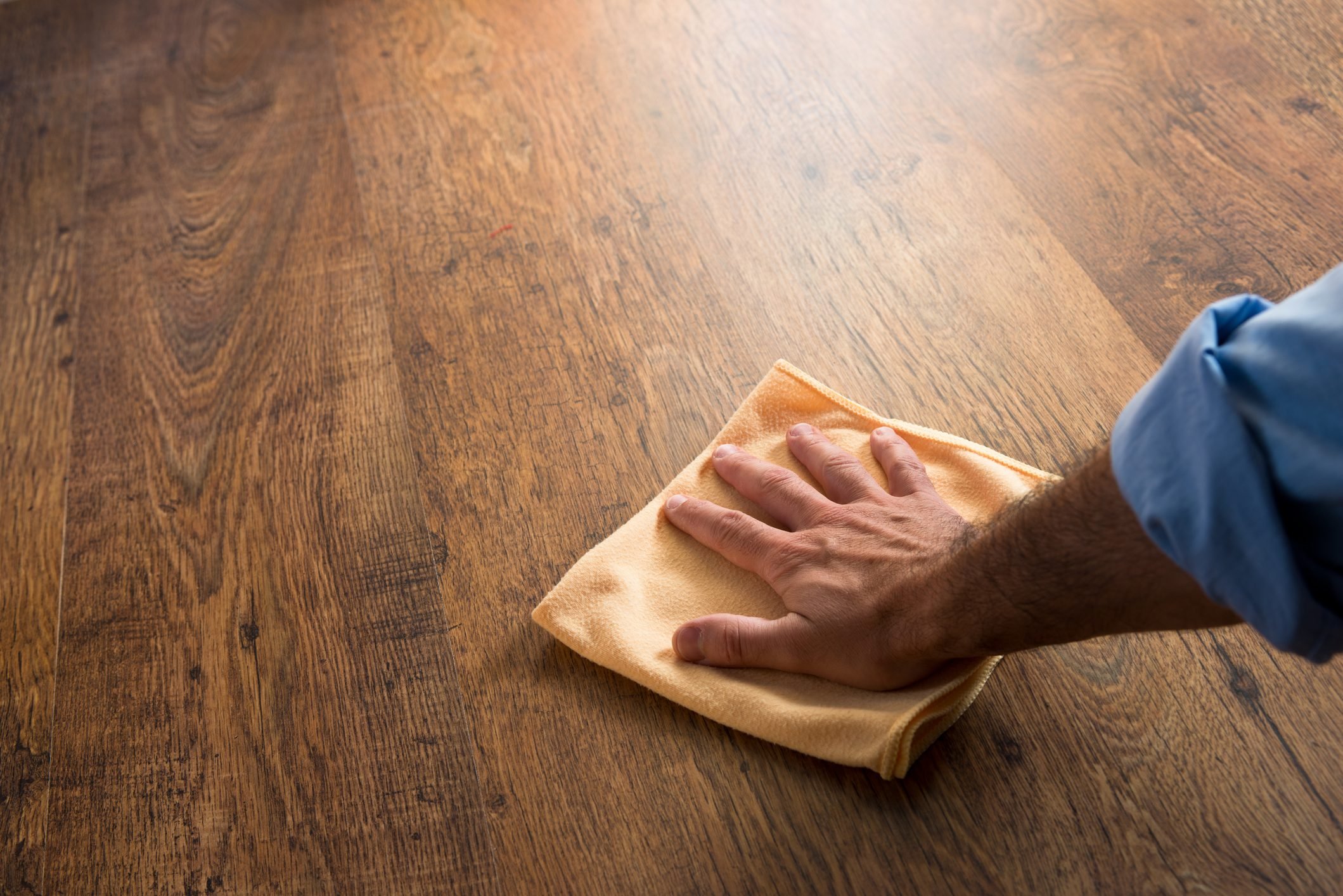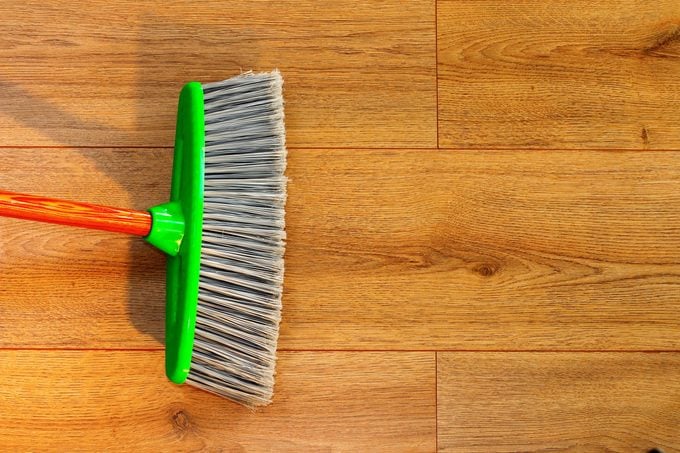Hardwood floors are elegant and durable. They can also harbor germs. Use these expert tips to disinfect your hardwood floors.

How To Disinfect Hardwood Floors

We all want a germ-free home. Sometimes that’s easier said than done, especially if you have kids and pets. We diligently haul out the disinfecting sprays and wipe down kitchen countertops, bathrooms and laminate floors.
But what about hardwood floors?
“Hardwood floors can be a beautiful and durable addition to any space,” says Andrii Gurskyi, founder of the New York City maid service HomeClean. “But they can also be a breeding ground for bacteria and viruses.”
Here, Gurskyi shares his tips for disinfecting hardwood floors, gleaned from years of experience as a cleaning company owner.
Note: These tips are for finished wood floors. Never use any water or liquid cleaner on unsealed wood floors. Sealants protect wood by resisting water intrusion, and unfinished wood floors lack this layer of defense.
On This Page
What’s the Difference Between Cleaning and Disinfecting Hardwood Floors?
According to the Centers for Disease Control and Prevention (CDC), cleaning means physically removing dirt and germs from surfaces. To do that, we scrub them with soap (or a cleaner) and water, then rinse to remove the residue.
For hardwood floors, add one last step: drying the wood surface well. Water left to pool on wood leads to warping and mold growth, particularly if it seeps into the spaces between the boards.
Disinfecting means killing or inactivating germs, not just removing them. Disinfectants feature chemicals like bleach or alcohol that disrupt the bacteria or virus, usually by destroying their cell wall or metabolic processes.
The CDC says to always clean before disinfecting. That way you remove most of the problem organisms and dirt first, so the disinfectant can work on the microorganisms left behind.
Note: There’s also sanitizing and sterilizing.
Sanitizing is the level of microbe removal between cleaning and disinfecting. Sanitizers aren’t as strong as disinfectants, but can be a worthwhile alternative to harsh chemicals if you’re looking to reduce germs. Sterilizing means to eradicate all forms of microscopic life. That’s typically done in specific circumstances, like in healthcare facilities and commercial food canning operations.
Should Hardwood Floors Be Disinfected?
It depends.
Cleaning does a good job of removing dirt and germs, according to hardwood floor experts. But when there’s an illness outbreak, or you want to target areas where kids and pets track in dirt and germs, disinfecting your hardwood floor can be a good idea. Gurskyi says it’s crucial to disinfect properly, though, because harsh chemicals and water can damage wood.
How To Disinfect Hardwood Floors
“Look for disinfectants that are specifically designed for hardwood floors, or those that are labeled safe for use on wood,” Gurskyi says. “Avoid using harsh chemicals that can damage the finish of the floor or leave streaks.”
Read the label carefully, and always test a small area to be sure the disinfectant won’t harm your floor.
Tools and materials for disinfecting hardwood floors
- Wood-safe disinfectant like Lysol Clean & Fresh Multi-Surface Cleaner;
- Bucket;
- Mop with wringing action;
- Microfiber cloth (optional).
Sweep the floor

“Before you begin disinfecting your hardwood floors,” Gurskyi says, “you need to make sure they are free of any dirt or debris.” Use a broom or vacuum to remove any loose dirt, dust and hair. Don’t forget to reach into all the corners and under furniture.
Dilute the disinfectant
“Most disinfectants come in concentrated form,” Gurskyi says, “which means you’ll need to dilute them before use.” Add the product to the bucket and dilute as recommended on the label.
Don’t go overboard. You won’t kill germs any better if you use more than indicated, so follow the instructions to the letter. Using too much could leave a residue on the surface of the wood — or worse, damage the finish.
Apply the disinfectant
Apply the solution to the floor with a mop for a large area, or a microfiber cloth for a small one. Wring out the mop or cloth well between passes to avoid pooling. After you’ve tested a small area, cover the entire surface of the floor with the disinfectant.
Pro tip: Clorox Disinfecting Wipes are safe for wood floors, Gurskyi says. They can be used to quickly disinfect high-traffic areas without doing the entire floor.
Allow to sit, then rinse
Disinfectants need time to work, so it’s important to allow the disinfectant to sit on the floor for the full time recommended on the product label. Then rinse the floor with clean water from a well-wrung mop or cloth.
Dry the floor
Almost done.
“Finally, use a clean, dry cloth or mop to dry the floor,” Gurskyi says. “Avoid leaving any excess moisture on the surface, as this can cause the wood to warp or cup.”
Now that your hardwood floors are clean and disinfected, keep them that way! Sweep your hardwood floors regularly, and remove shoes at the door to avoid tracking in dirt and germs.


















